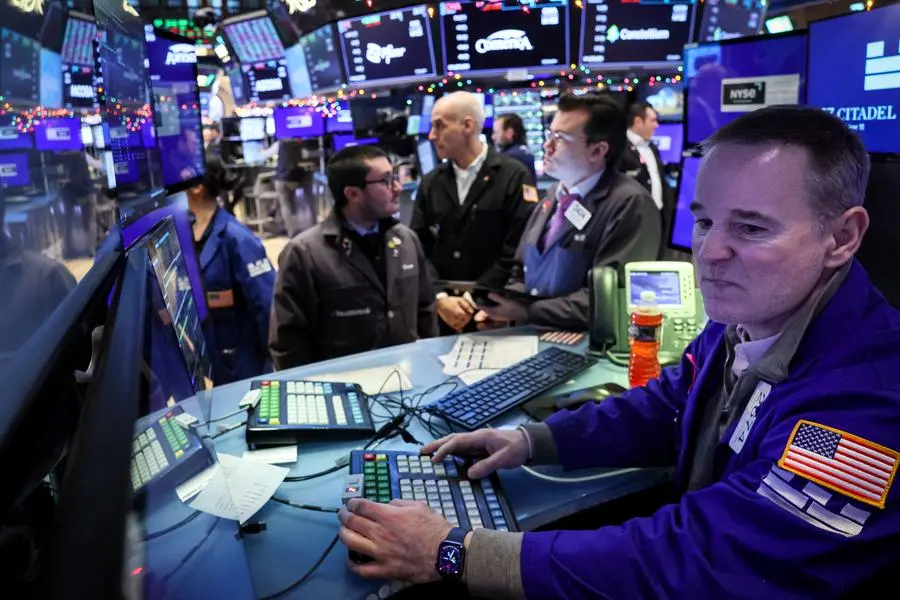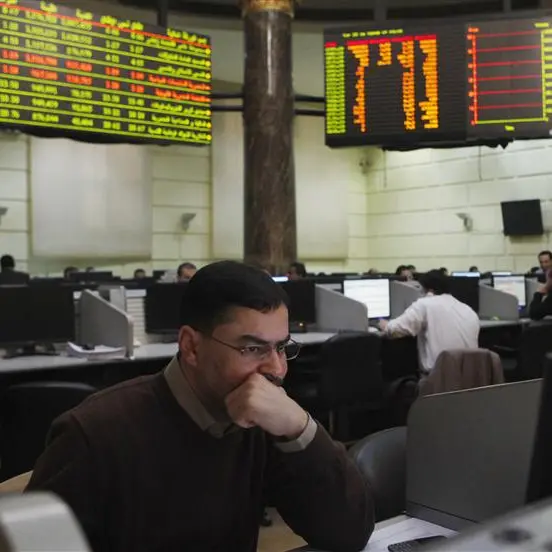PHOTO
U.S. stock indexes ended the second session of the year down again in extended profit-taking on Wednesday after a strong finish to 2023, with minutes from the Federal Reserve's December meeting failing to shake off the funk hanging over markets.
It was the first time the benchmark S&P 500 index has started the year with two straight declines since it kicked off 2015 with a three-session skid. It is also its worst two-day result, on a percentage basis, since late-October.
The decline contrasts with the blistering run for all three major Wall Street benchmarks in the final two months of the year. The S&P 500 came within striking distance of its all-time closing high last week as signs of cooling inflation spurred investors to bet on an aggressive rate-cutting schedule.
However, investors have been cautious so far in 2024, wary of the U.S. central bank's expected pivot to rate cuts this year and how quickly these might be implemented. While the Fed is widely expected to keep rates on hold in January, traders have priced in a 67% chance of a 25 basis point rate cut in March, as per CMEGroup's FedWatch tool.
The Fed minutes released on Wednesday offered new insight, with policymakers appearing increasingly convinced that inflation was coming under control, with "upside risks" diminished and growing concern about the damage that "overly restrictive" monetary policy might do to the economy.
Little light was shed on when rate cuts might commence though.
"The market wanted to hear when and how much the Fed was going to drop rates, and they didn't get that - even if it's not the Fed's job to do that," said Jason Betz, private wealth advisor at Ameriprise Financial.
"What we're seeing play out in today's selling maybe is a little bit of frustration with the perceived lack of transparency of the Fed."
Betz noted that profit-taking from 2023's gains and recalibrations for the new year were likely also factors influencing traders' thinking.
Shares of rate-sensitive megacap stocks fell, with Nvidia , Apple and Tesla ending down between 0.7% and 4%.
The S&P 500 lost 38.02 points, or 0.8%, to end at 4,704.81 points, while the Nasdaq Composite lost 173.73 points, or 1.18%, to 14,592.21. The Dow Jones Industrial Average fell 284.85 points, or 0.76%, to 37,430.19.
Airline stocks came under pressure as a jump in oil prices, following disruption at Libya's top oilfield, raised concerns about fuel costs. The S&P 1500 passenger airlines index tumbled 4%.
Higher crude prices supported the energy index, which advanced 1.5%, the leading gainer among the minority of S&P sectors in positive territory.
Financials was among the sectors that traded lower, off 0.8%, with Charles Schwab and Blackstone among those pulling down the index. They dropped 3% and 4.6%, respectively, after Goldman Sachs downgraded the stocks to "neutral" from "buy."
However, Citigroup gained for a second straight day, rising 1.1% to its highest finish since mid-August 2022, as the bank continued to benefit from a price target upgrade and an upbeat analyst report from Wells Fargo released the previous day.
The volume on U.S. exchanges was 11.84 billion shares, compared with the 12.35 billion average over the last 20 trading days. (Reporting by Sruthi Shankar and Shristi Achar A in Bengaluru and David French in New York; Editing by Shinjini Ganguli and Richard Chang)
Reuters




















